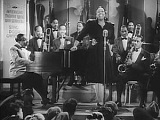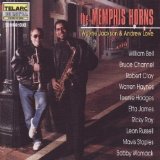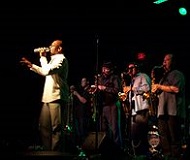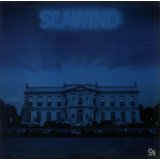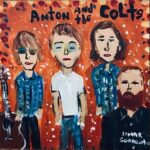 It’s a bit of a rock/pop tradition; the weekend song. They’re liberally sprinkled through the history of the rock era and the best of them have a bit of an edge. Dave Edmunds, not surprisingly had more than one, his Nick Lowe co-write “Here Comes the Weekend” and the John Fogerty cover “Almost Saturday Night”. Even Elton got in on the act with “Saturday Night’s Alright for Fighting”. As we moved towards the 21st century, the emphasis shifted from booze to clubs and chemicals – David Gray’s “Babylon” and Hard-Fi’s “Living for the Weekend”. Which points us to 2020 and the new single from Anton and the Colts, “Boy Living for the Weekend”.
It’s a bit of a rock/pop tradition; the weekend song. They’re liberally sprinkled through the history of the rock era and the best of them have a bit of an edge. Dave Edmunds, not surprisingly had more than one, his Nick Lowe co-write “Here Comes the Weekend” and the John Fogerty cover “Almost Saturday Night”. Even Elton got in on the act with “Saturday Night’s Alright for Fighting”. As we moved towards the 21st century, the emphasis shifted from booze to clubs and chemicals – David Gray’s “Babylon” and Hard-Fi’s “Living for the Weekend”. Which points us to 2020 and the new single from Anton and the Colts, “Boy Living for the Weekend”.
Anton O’Donnell, who fronts Anton & The Colts, is based in Glasgow (bear with me here) the subject of a very famous music-hall song on a similar theme, “I Belong to Glasgow”, written by Will Fyffe a hundred years ago in 1920. “Boy Living for the Weekend” opens with a plaintive harmonica evoking the horn of a train heading for the city before breaking into a Celtabilly shuffle that has a lot in common with the Dave Edmunds offerings. Lyrically, it’s a 2020 version of all the songs above – let’s shake off the shackles of the weekly grind and take everything (every little bit) that the weekend has to offer. After all, we’ve got five days to regret and recover.
Sonically, it’s a lot like a seventies/eighties Dave Edmunds Spector-like Wall of Sound mix. There’s a lot going on, with two guitars, the punchy rhythm section, piano and loads of harmonica fills under Anton’s gruff American-tinged vocal. It’s the kind of production that would take your head off played on a Rock-Ola; it’s a full-on assault on the senses in the same way as the anticipated weekend will be, and once it starts, there’s no letting up until it’s over.
“Boy Living for the Weekend” is out now as a download and on streaming platforms and will be available as a limited run of 300 seven-inch singles later in the year.
Here’s a bit of a late addition, the video which was released this week:
 Neil Sheasby’s had quite a year this year. Not only has Stone Foundation gone from strength to strength (without even releasing a new album), but he’s become an author with the first volume of his memoirs, “Boys Dreaming Soul” hitting the bookshelves this year. When the call goes out for High Fives contributions, Neil’s always one of the first to reply, which is why he’s always at the top of the list when we publish. Here are Neil’s thoughts on some of the things that have crossed his personal horizon in 2019:
Neil Sheasby’s had quite a year this year. Not only has Stone Foundation gone from strength to strength (without even releasing a new album), but he’s become an author with the first volume of his memoirs, “Boys Dreaming Soul” hitting the bookshelves this year. When the call goes out for High Fives contributions, Neil’s always one of the first to reply, which is why he’s always at the top of the list when we publish. Here are Neil’s thoughts on some of the things that have crossed his personal horizon in 2019:
 Touring
Touring
I never thought I’d be saying this but I appear to have re kindled a passion for touring over the past few months. Gigging and touring are two separate beasts, the gigs I can handle, in fact it’s fairly obvious to anyone who comes along to see Stone Foundation that it’s an enjoyable experience for us all, there’s certainly no going through the motions routine in evidence. Usually though that 90 minute release upon stage is sandwiched between endless hours of travelling & hanging around, but alas you barely get to see anything of the destination except for a hotel room, dressing room and a stage (I’ve been to Hamburg six times and I still couldn’t tell you anything about it except there’s a decent kebab house opposite The Mojo Club)
Anyway, at some point over the past twelve months I have begun to appreciate and embrace my time spent on the road more. We began the year by doing a gruelling jaunt across Germany & Spain, the gigs were fantastic but the miles we had to put in, especially zig-zagging all over Espana were undeniably exhausting (I think the promoter had routed our tour by throwing darts at a map).
However, whilst this almost literally killed me off, the subsequent dates back here in the U.K. felt as though it was a bus trip up to Baddesley Ensor. A doddle in comparison. The summer tour of forests supporting Paul Weller was a bona fide high, not just hanging with him but the crowds! Wow! What a reception we received too. It felt like another corner turned, the bar once again raised and our music making a connection with folk who’d never seen us before. I loved every second of it and to add to my enjoyment even more I got the opportunity to take my son Lowell out on the road with us and for us both to share what unfolded was indeed a real solid bond.
Our most recent tour reaped the benefits of this exposure and I’d go as far to say that the November gigs were some of our best yet, certainly the most enjoyable for us all. I’m now looking forward to a new decade, new challenges, new chapter and lots more new music. I’m buoyed and excited for the future.
 Page Turners
Page Turners
As you’ve probably gathered by now I’m an avid reader of music biographies, I don’t even have to really appreciate the subject’s career; I’ll pretty much read anything music-related (Phil Collins, for example)
I think there’s been some great page-turners of late. I really enjoyed both the Brett Anderson books (whose music I could take or leave), Will Birch’s fine assessment of Nick Lowe and enjoyable biogs from Elton John, Debbie Harry & Andrew Ridgeley.
Obviously it was also somewhat of a landmark achievement for me to finally get my own book “Boys Dreaming Soul” published and into print this year. I’m glad I decided to put it out there as the response and reaction to it has been humbling. I’m considering following it up but it’s just a case of assigning the time to do it as it’s a fairly hefty project to take on but enjoyable and cathartic nonetheless.
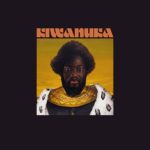 Music
Music
I think it’s been an exceptional year for new music. If I remember correctly last year I told you how I was embracing Spotify playlists and all I was discovering via that medium, and that has just continued to turn up so much new incredible music and artists.
The Colemine label is excelling in great new soul music and even established contemporary labels such as Daptone have spread their wings somewhat with releases by artists such as Doug Shorts. I thought the Michael Kiwanuka album was another winner too, a proper listening experience from start to finish. Durand Jones and The Black Pumas also showed a way of presenting soul by avoiding the cliches.
In other areas I really enjoyed albums such as Nick Cave’s latest and the Lucy Rose LP that came out at the beginning of the year.
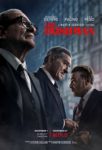 Vision
Vision
I recently watched The Irishman. I’d read mixed reviews, mainly bemoaning its length but all those movies were three hours plus (Once Upon a Time in America, Goodfellas, Casino etc…) I’m not sure people have the patience or attention span they used to; I guess we have social media to blame for that? I found the film kind of emotional to witness, with what will surely be the last hurrah for the greatest actors of our generation; De Niro, Pacino, Pesci and even Harvey Kietel all under the genius direction of Martin Scorsese.What a journey and what an incredible collection of talent, the likes of which we will never see again. I thought Pacino in particular was amazing.
The Joker was also a masterclass in acting, I caught it at the cinema and it blew me away. A great intensity to Joaquin Pheonix’s performance. It’s fantastic to see an upsurge in thought provoking and challenging movie making.
 The Beautiful Game
The Beautiful Game
I can’t say too much about this subject because I’ll end up cursing their season again but I have rekindled my love and passion for football over the last few years (I’m not sure it ever dwindled to be honest), it’s mainly due to Leeds United’s turn of form under the guidance of Bielsa, he’s a maverick and a visionary but most of all he’s a hell of a lot of fun, right down to the bucket he rode in on.
I sincerely hope this is our time, the city is rocking and buzzing with optimism, investment and finance to make the giant leap into the premiership is all in place, it would be heartbreaking to fade away again post-Christmas and return to the merry go round of a managerial circus and also lose this incredible crop of young players. It’s the hope that kills you eh?
I’m also catching a few Adders games when I’m not touring with the band and that non-league action still enthralls me. If you haven’t witnessed an away game in Burbage on a freezing cold Wednesday night in December, clutching a Bovril then you haven’t lived…
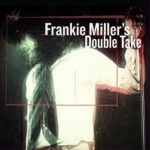 The promotion campaign for “Double Take” features some of the artists involved (Rod Stewart, Paul Carrack and Huey Lewis) talking about the first time they saw Frankie Miller. Now, that’s a great idea.
The promotion campaign for “Double Take” features some of the artists involved (Rod Stewart, Paul Carrack and Huey Lewis) talking about the first time they saw Frankie Miller. Now, that’s a great idea.
Freshers’ Week, Dundee University, 1976 and the first gig of the year was Frankie Miller’s Full House. I went to the gig with my new mate Steve (still a mate and writing great reviews for MusicRiot). The band were superb and we left the gig raving about Ray Minhinnet’s guitar work, Chrissy Stewart’s bass playing, but most of all about Frankie’s stunning soul voice. He started the ballad “With You in Mind” a cappella, and with perfect pitch, before the band dropped in underneath the vocal; I was completely hooked from that moment. I’ve seen an awful lot of gigs since then, but I’ve never heard a band that nailed it so completely, song after song.
So let me put “Double Take” into some kind of personal and historical context. As Frankie slowly fought back from the brink after a brain haemorrhage in 1994, you would hear occasionally from friends on the Scottish music scene about his progress; not frequently, but often enough to know that things were gradually improving, and it carried on like that until 2012 when word started to leak out that a project with Frankie’s old demo tapes was in progress. It’s taken over four years and probably a few unexpected twists and turns, but the final result is “Double Take”, nineteen unreleased Frankie Miller originals reconstructed from demo vocals, and all but one reimagined as duets with singers that wanted to be involved with the project. Although Frankie’s biggest chart hits (“When I’m Away From You” aside) were interpretations of other people’s songs, he also wrote a shedload of great songs for himself and other artists.
The nineteen songs on “Double Take” are pretty representative of Frankie’s songwriting output, covering soul, blues, rock, country and ballads. And that’s the staple diet of Scotland, right there; forget your deep fried Mars Bars. All of the songs have been arranged around the original demo vocals (with Frankie involved in quality control), but the quality of the voice is so good that almost everything sounds like a full-scale production. To be honest, given the choice, I’d rather listen to Frankie Miller demos than most singers’ finished product.
The guests on “Double Take” are a mix of megastars and people that Frankie knew and worked with in the past. Without listing the whole lot, how about Joe Walsh, Elton John, Kid Rock, Delbert McClinton, Kim Carnes and Willie Nelson. Add those to the ones listed at the top of the article and you’ve got a huge amount of respect across musical styles for Frankie’s work. Great news for fans of Frankie from the mid-seventies is that Full House appear on three songs in the middle of the album. “When It’s Rockin’” (with Steve Dickinson) is a horn-driven rocker, “Beginner at the Blues” (with Delbert McClinton) is a slow blues and “To Be With you Again” (with Kim Carnes) is a mid-tempo ballad. For a while there, I was back in that night in1976.
With so many songs and such a variety of arrangements, it’s difficult to pick standouts, but the gospel choir of “Where Do the Guilty Go” (with Elton John) and the country ballad “I Want to Spend My Life with You” (with Willie Nelson) are hard to beat, while the hauntingly simple “I Do”, with only Frankie’s vocal over a sparse arrangement is the perfect closer for the album.
This has been a long journey for some very dedicated people, culminating in an album that can only add to Frankie Miller’s legacy by bringing those powerful vocal performances to a wider audience and unearthing so many unreleased songs. This is a classic.
“Double Take” is out on September 30th on Universal.
Here’s a sneaky little peek for you:
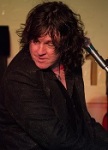 We’re big fans of Bob Malone here at MusicRiot so when I got the chance to meet up for a chat on the final night of his UK tour it was a bit of a no-brainer. Bob’s been in the UK for three weeks touring in support of his “Mojo Deluxe” album and the “Mojo Live” DVD and The 100 Club gig was the climax of a hectic tour schedule. So a very noisy 100 Club dressing room is where we got the chance to talk about old pianos, New Orleans and Southside Johnny, among other things:
We’re big fans of Bob Malone here at MusicRiot so when I got the chance to meet up for a chat on the final night of his UK tour it was a bit of a no-brainer. Bob’s been in the UK for three weeks touring in support of his “Mojo Deluxe” album and the “Mojo Live” DVD and The 100 Club gig was the climax of a hectic tour schedule. So a very noisy 100 Club dressing room is where we got the chance to talk about old pianos, New Orleans and Southside Johnny, among other things:
Allan – So it’s approaching the end of the tour and we met on the first night in Southend. How has it been since then?
Bob – It’s been great; a few funky gigs, a few spectacular gigs and we’ve worked hard. We had a couple of nights where we didn’t have gigs but we still had a radio show or a long drive; we’re a hard-working group.
Allan –Have you had any particularly good gigs?
Bob – This one’s definitely gonna be a good one and Keighley Blues Club, that was a really great crowd and Scotland as well, and we also played on the Isle of Wight.
Allan – I remember when we met in Southend you were talking about Italian audiences.
Bob – They’re full on, right out of the box, from the first song.
Allan –Do you notice any differences in the audiences around the UK?
Bob – Well it sometimes takes three or four songs here. The north is different from the south, as you know. I didn’t until I did these long tours here; England was just England like people think America is just America but here it’s five different countries with completely different cultures.
Allan – Have you played The 100 Club before?
Bob – No, but its reputation precedes…
Allan – How does that feel?
Bob – It feels good. I was soundchecking with the grand piano earlier and the sound engineer had footage of Paul McCartney playing that same piano.
Allan – I think it’s great to see it with the lights up and look at all those great photos around the walls of the people that have played here in the past.
Bob – I love places with history like this; you feel like you’re part of a continuum.
Allan – You’re promoting the Mojo Deluxe album at the moment. What kind of a reception has the album had?
Bob – I think it’s the most press and radio I’ve had on anything I’ve done and it’s my twentieth year of making records, so I’m happy with that.
Allan – After doing what I think of as the day job with John Fogerty, how does this compare? It must be a huge culture change.
Bob – It’s different. I’ve been doing this for twenty-five years; this is what I do, and I’ve been playing with John for almost five years now. With this, so long as the sound man is competent I’m happy. Everyone thinks it must be weird to go from small crowds to big crowds, but it really isn’t. As long as it’s a good musical experience and you’re connecting with an audience; that’s why we play. You can’t really control the size of the crowd and also when I do this it’s a mission; when I play with John it’s his gig. I’m lucky to be there but it’s his gig. I get my solo but other than that, it’s all about him and I’m just in the background.
Allan – Trying to avoid the pyrotechnics…
Bob – Trying not to burst into flames during “Fortunate Son”, exactly.
Allan – So when you’re out doing your own stuff, here and in the States, what would be your ideal band line-up?
Bob – The ultimate, when I’m not touring; when I’m LA, and I don’t have to put people in hotel rooms would be a nine-piece band. I just did a DVD, which I did the way I would like to do it and I had three female background singers, percussionist, drums, bass and guitar. I do a lot of stuff with horns as well, for years I had a horn section, so it would be a nine to eleven piece band and a second keyboard player would be great, to play the organ parts. (If you’re really paying attention, you’ll notice that the total number of musicians is only eight, but there’s a slide guitar player on there as well. I hope your heart isn’t broken by that omission Marty Rifkin.)
Allan – On your own tours, particularly in the UK, you rely on the venue providing the piano. Have you had any horror stories with that in the past?
Bob – Well, usually I carry a digital piano for when there’s no real alternative, but most of the places I play now, if there is a real piano, it’s usually in good shape, but I’ve been to places that had a hundred year old upright and some of the keys didn’t work but I kind of like to play those anyway, just for the challenge. It’s like going in the ring with this old piano and fighting it to see who wins. I love real pianos because they all have personality; the digital ones are handy and they’re light and they don’t go out of tune, but they don’t have much of a personality. They get the job done.
The one in Southend, that’s got some issues. It’s got some broken strings; it’s one that I fight to the death but I like playing it because it’s an old Bösendorfer.
Allan – I did notice a few problems at the soundcheck that night…
Bob – It needs a rebuild, but still I’m glad to see it.
Allan – You’re classically and jazz trained; was there any one thing that turned you into a rock/blues pianist?
Bob – The rock thing came first. One of those things was hearing “Sergeant Pepper” for the first time, so it’s you guys, it’s your fault. Then I heard Billy Joel and Elton John and not very long after that the New Orleans thing, which blew me away, and then Ray Charles and I became a huge student of that stuff but the rock stuff was always there.
Allan – Were you singing right from the start?
Bob – I started singing when I was fifteen probably. I started singing because I wanted to impress a girl I had a crush on. I just played classical piano but “Your Song” by Elton John was the first thing I ever sang in public; I thought ‘She’ll love me if I sing this song’. I was a terrible singer, some people still say I am, but I learned to work with what I have.
You write songs and there are obviously lots of people with better voices than me but when you write songs you have a story to tell and people always respond to the story and sometimes you’re the only person that can tell it.
Allan – We’ve had “Mojo Deluxe” this year, so what’s next on the agenda.
Bob – Well, I’ve got this DVD coming out and the audio from that was so good, we’re thinking of putting that out as a live record next year and I’ll make another new record, so I’ll probably get the live one out next year and in 2017 I’ll have a new studio album. I’ve got to get realistic about this; I’ve got about half the songs I need for another record.
Allan – I interviewed Southside Johnny in July 2014 in London…
Bob – Southside Johnny was also one of the big things in my youth and I should mention this because growing up in New Jersey, we all knew Southside Johnny. This was the 80s and you couldn’t hear that kind of music on the radio at all and so my first real exposure to r’n’b, blues, horn section kinda music was Southside and I learned from that and went back and figured out all the other stuff. He was huge for me.
Allan – When I interviewed him at Shepherds Bush Empire last July, we spoke about his new album “Soultime!” and he said they were aiming to get it out for Christmas 2014 and that finally came out in August this year.
Bob – Yeah, that’s about right. I toured here last year and I had half of “Mojo Deluxe” out as “Mojo EP”. We had finished recording and it was half-mixed and there were some problems and we couldn’t get the other half mixed in time and the promoter said ‘The whole thing is you have a record out for this tour; we can’t get any press without a record’ so we had half a record out as an EP, just in the UK for the tour.
Allan – And that worked really well as a sampler for the album.
Bob – And by the end of last year the whole thing was done but then we needed a three month ramp for the release date to get it publicised and I was touring through the spring, so we just put the whole thing off and it came out almost a year later. That’s how it works. There are so many factors; if you have a lot of money involved, you can get things done a lot quicker. On a limited budget, you still need time to publicise, so you often end up delaying.
Allan – One final question; do you have one song that tears you up and gets you really emotional?
Bob – Yeah, “One for my Baby”, the Sinatra song; that one kills me every time. It depends on the day; it could be something else on another day.
Allan – Thanks very much, Bob.
And there you go; a private audience with the great Bob Malone, who was as entertaining offstage as on. Since we spoke, I’ve had a chance to watch the “Mojo Live” DVD and it’s superb, capturing the magic of a one-off performance absolutely perfectly. It has great performances from all of the musicians and it’s a whole load of fun; keep an eye out for it.
 It’s interesting that Toronto-based guitarist and songwriter David Celia has chosen “Double Mind” as the song and central theme for his fourth album; it suggests a dichotomy in modern life that might even extend as far as schizophrenia but, for me, the album conjures up a totally different duality. In the old football (or soccer) cliché, this one’s a game of two halves, which splits almost exactly down the middle. If it was split over two sides of vinyl, I would very happily listen to side one and ignore side two completely. So what is it about this album that provokes such a mixed reaction?
It’s interesting that Toronto-based guitarist and songwriter David Celia has chosen “Double Mind” as the song and central theme for his fourth album; it suggests a dichotomy in modern life that might even extend as far as schizophrenia but, for me, the album conjures up a totally different duality. In the old football (or soccer) cliché, this one’s a game of two halves, which splits almost exactly down the middle. If it was split over two sides of vinyl, I would very happily listen to side one and ignore side two completely. So what is it about this album that provokes such a mixed reaction?
The album opens with “Welcome to the Show”, a West Coast, country-rock tinged song which demonstrates Celia’s songwriting and features some lovely guitar work. It’s a scene-setter and it gives a pretty good idea of what’s coming on the first half of the album. Vocally, he has echoes of Jackson Browne or Neil Young and the songs are rooted firmly in singer-songwriter territory dealing with the struggles of modern life (“The Grind”), looking for a soul-mate (“Speak to Me”) and the schism caused by multi-tasking (“Double Mind”). “Thin Disguise” which deals with putting on a brave face after a break-up has hint of Springsteen’s “Kitty’s Back”, particularly the walking bass line, and the album’s first half is high-quality, inventive, introspective songwriting with musical performances to back it up. The only discordant tone is “Tongues”, which moves away from relatively serious territory into something more light-hearted and contains the clunky line ‘Don’t be shy with your region of nether’; it’s not the album’s finest lyrical moment.
The light-hearted (and lightweight) “Drunken Yoga” and “Go Naked” (which mashes up Elton John’s “Crocodile Rock” with Beach Boys harmonies) sound out of place on a predominantly serious album, but not as much as “Princess Katie” which is David Celia’s “Frog Chorus”; it is possible to take the Beatles comparisons too far. The album’s closing track, a German version of the opener doesn’t really add much to the listening experience, either. It’s not all unbridled levity in the second half of the album; “Want You to be Happy” is a break-up song and the album’s longest song, “Smile You’re Alive” again has a seventies singer-songwriter feel ( a bit Neil Young, a bit Simon and Garfunkel’s “America” maybe) although the discordant piano coda feels a little out of place.
Listening to “Double Mind” as an entity is a frustrating experience as it bumps along from the sublime to, well, “Princess Katie”. It’s obvious that David Celia is absolutely fizzing with musical ideas and wants to get all of them out there but I’m not convinced that they all fit together happily here. You could easily cut out the more lightweight songs and transform this into a four-star album with nine or ten very strong songs.
“Double Mind” is out on August 21 on Seedling Music and David will be touring the UK in November.
Our next contributor plays saxophone with Southside Johnny and The Asbury Jukes but also released a strikingly good album this year as part of the New York Horns which is one of Allan’s albums of the year. When we asked him for a High Fives piece, here’s what he came up with. We think you’ll like this.
5 Horn Sections That Changed My Life
As a saxophone player, one of my absolute favorite ways to make music is with other horn players. Give me a trumpet or two, a couple of other saxophone players and a trombone to add some love, and you’ve got a recipe for a whole lotta fun. If the rhythm section is the meat and potatoes, and the vocalist is dessert, then the horn section is the salt. We bring out all the other flavors and make everything oh so much sweeter.
In thinking about the subject matter for this best-of list, it quickly dawned on me that I had MANY more than five examples that I could draw upon to make my point. So many that I almost gave up! After some careful consideration though, here’s five of the horn sections that have changed my life through their contributions to the music:
THE swingin-est band in the history of jazz. Count Basie’s band emerged in the 1930’s in Kansas City, and became the de facto definition of foot-stomping swing with their penchant for shouting blues, riffing head arrangements, and an infectious groove that just made you want to dance. The jazz traditions of “riffing” and “head arrangements”, while not originating with the Basie band, were certainly developed and forwarded onward by the band. Many of the riffs, licks and phrases that you will hear modern horn sections play can trace some or part of their lineage back to the Basie band. Check out “The Atomic Mr. Basie” (1957) and “Count Basie Swings, Joe Williams Sings” (1956). Two of my all time favorite Basie albums.
James Brown redefined popular music. He also redefined the role of the horn section in popular music. Prior to his influence, horns would generally have a more melodic role – playing melodies and generally being in a “lead” role. The late swing and early jump blues bands often were led by horn players and under the vocals the horns played a large supporting role, remaining a mostly harmonic underpinning. James changed all that. The horn section under James Brown became another rhythmic instrument, driving and propelling the groove. With snapping rhythmic pulses and repeating motifs, the horn section was another texture in the rhythm section, adding propulsion and rhythmic intensity. Check out “Mother Popcorn”, “Super Bad”, “Soul Power” and “Cold Sweat” for classic examples. The JB Horns (Maceo Parker, Fred Wesley, Alfred “Pee Wee” Ellis) also were a fixture of P-Funk and Bootsie’s (Collins) Rubber Band, as the Horny Horns.
Growing up in North Carolina, in the southern United States, it was inevitable that I was exposed to the music coming out of Memphis, Tennessee and especially STAX Records. Wayne Jackson and Andrew Love, aka the Memphis Horns, are one of the most recorded horn sections in history. If you’ve heard “Dock Of The Bay”, “Soul Man”, “Hold On I’m Comin’”, “Suspicious Minds”, “Sweet Caroline”, “Takin’ It To The Streets”, “Let’s Stay Together”, “Born Under A Bad Sign”, “Knock On Wood” (and countless other hits), then you’ve heard the Memphis Horns. They appeared on virtually every STAX recording, backing Otis Redding, Sam & Dave, Eddie Floyd, Carla & Rufus Thomas and an endless list of others. Not only were they a staple of the Memphis scene but could also be found as part of the Muscle Shoals scene, and on recordings with Aretha Franklin and Wilson Pickett.
No modern horn player that plays funk, soul or R&B hasn’t heard of or spent time studying TOP. Bursting onto the scene in Oakland, CA in 1968, Tower saw its peak success from 1973 to 1974. The band continues to tour extensively to this day, playing hundreds of shows every year across the world. The horn section has been featured on countless recordings by artists as diverse as Little Feat, Graham Central Station, The Monkees, Santana, Elton John, John Lee Hooker, Rufus, Rod Stewart, Huey Lewis and the News, and Aerosmith and has come to define a punchy, modern and funky style of writing and performing for horns. Check out “Tower of Power” (1973) and “Back to Oakland” (1974) for the definitive TOP experience.
While not a horn section unto himself, Jerry Hey has probably written more horn arrangements for hit songs and albums than anyone else in the business. As part of the Seawind Horns, Jerry was brought to the attention of Quincy Jones. That relationship led to Jerry’s writing for some of the biggest names in the industry. His credits as an arranger include albums from Michael Jackson, Brothers Johnson, Donna Summer, Rufus, George Benson, Patti Austin, James Ingram, Frank Sinatra, Barbra Streisand, Earth, Wind and Fire , Al Jarreau, Chaka Khan, and the list goes on… Two of my favorite albums that feature Jerry’s writing (and the Jerry Hey Horns) extensively are Al Jarreau’s “Jarreau” and “High Crime” (Check out “Imagination”!) and likely my all time favorite Jerry Hey arrangement (and performance) is from Michael Jackson’s “Workin’ Day And Night” (“Off The Wall”).
I could go on and on… there are so many great horn sections, players and writers out there, making incredible music. Hopefully this list will give you some food for thought and a good place to begin to explore the horn section legacy. Enjoy!
Since we started the High Fives feature two years ago, only two guest contributors have been ever-present. We’ve already heard from Dean Owens, so now it’s time for Billie Ray Martin. Her choices are always interesting and eclectic and this year is no exception. Have a listen to these and you’ll see what we mean.
He’s done it again. After my initial surprise that he was once again covering the trials and tribulations of a relationship on this album, I realised that his approach is radical. He tells a deep truth that is at times uncomfortable, but ultimately rewarding to witness. ‘Jealousy’ is the most striking example from this best album of 2014.
Waterson deserves major recognition in the coming year. “Ae Fond Kiss” is just something he came out with, because he felt like it. The effortless skill and talent here is apparent as is the deep soul that drives him.
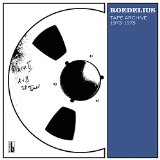 Hans-Joachim Roedelius – “Tape Archive 1973-1978”
Hans-Joachim Roedelius – “Tape Archive 1973-1978”
This is one of my most precious possessions. Not only is the quality of the vinyl, the cardboard, the print, the best I’ve ever seen and the mastering is warm and lush; the music too is almost unexpectedly beautiful and the influence on people like Brian Eno becomes even more obvious. Each vinyl includes also a CD album. Money was never better spent.
 Bright Light Bright Light feat. Elton John – “I Wish We Were Leaving”
Bright Light Bright Light feat. Elton John – “I Wish We Were Leaving”
When I heard this song I emailed Rod Thomas telling him that the (at the time) 26,000 listens on Soundcloud were all mine! Songwriting at its best.
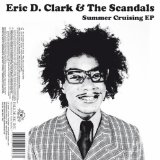 Eric D. Clark & The Scandals – “Summer Cruising EP”
Eric D. Clark & The Scandals – “Summer Cruising EP”
This is not a new release but I came across it this year. It is an uplifting song, with a funky production and mix. The inimitable Eric D Clark on vocals warm up the heart while you skip round the living room dancing.


